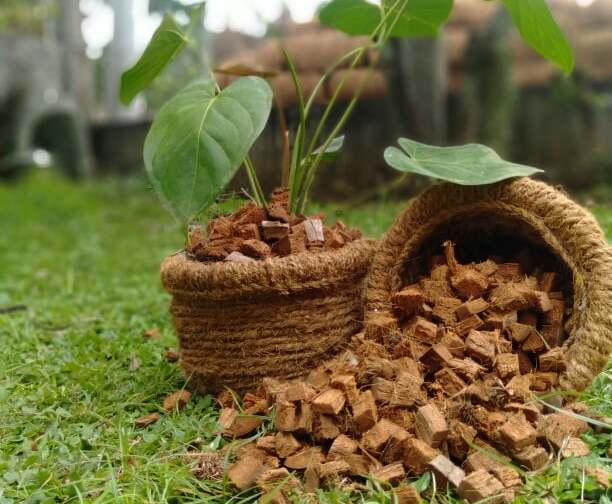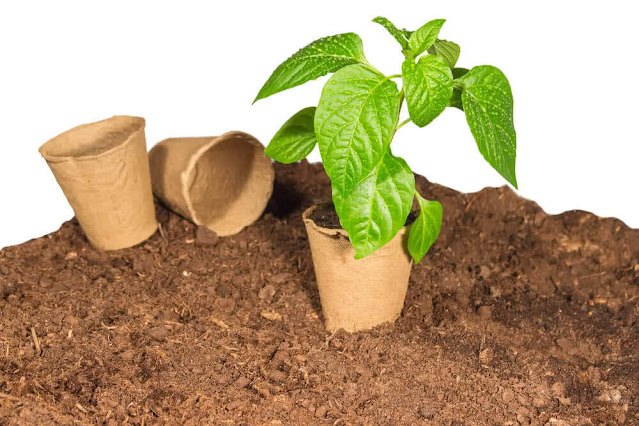Different Forms of Coco Peat
Different Forms of Coco Peat
Coco peat is widely available in any nursery in your area, or you may order it online. You can find it in a hydrated state. It would help if you bought it from reputable sources because it could contain harmful additives to enhance its weight or volume.
1) Lose Coco Peat
a) For container gardening,
Mix equal parts soil, compost, and coco peat to make your potting mix. Alternatively, you can prefer using 35 percent coco peat, 40-45 percent soil, and 20-25 percent compost.
Alternatively, you can mix coco peat and compost separately until a 1:1 ratio is achieved. However, because compost is high in nutrients, mixing it with soil and compost is highly recommended to reduce nutrient leaching.
b) In gardens,
You can mix coco peat into the soil by plowing the planting area gently. It enhances the soil structure while also adding organic matter.
c) Germination:
You can utilize coco peat alone to germinate seedlings in the germination trays. A seed starting mix is another name for it.
d) Bedding
It can be utilized as a bedding material/substrate in vermicomposting and mushroom growing.
e) As a mulch:
Coco peat is an excellent mulching material for preventing water loss from the soil or any other substance. It can be used as a coating to decrease moisture loss from land, potted plants (on soil), and compost piles.
2) Compressed Bricks

Little fibers/coir are squeezed and shaped into various shapes to manufacture hard bricks. To satisfy various requirements, the size and shape of these marketing bricks may vary. They are dry and compacted to provide a high volume of coco peat in a little amount of space.
One can soak it in water to the point where it expands many times its volume, resulting in a loose virgin coco peat powder. Reconstitution is the term for the process of hydrating the coco coir block.
Coco brick re-constitution:
- In a big tray or tub, place the coco brick. Slowly pour water into the brick by twisting it. Make sure the block is hydrated enough from both sides.
- Now, you should let the block rest for 5 to 6 minutes.
- Continue to apply water to the remaining dry brick while loosening the enlarged coco peat. Repeat this technique until the entire brick has been extended.
- You should add water to the coco peat to make it somewhat damp. Therefore follow the recommendations in the product description.
Note: Coir bricks can expand up to 15 times their original size.
3) Coco Chips
Coco chips come in various sizes and are created from either the exocarp and mesocarp of coconut drupes or just the mesocarp. They are available in a variety of sizes and forms. Coco Chips are mostly made to be mulches, but some are also used in potting mixes to help with aeration and drainage in the growing medium.
4) Seed starter coco discs
Seed starter coco discs or coco pellets are different types of coir goods specifically developed to germinate seeds, hence the names. When hydrated, coco peat or coco peat with potting mix is dried and crushed into circular discs with varying diameters.
They are wrapped in netting or soft woven linen, which retains the coco peat when enlarged. It can be transplanted when the seedlings are ready, and you can set them directly in the ground without taking them from the discs since the coco peat cloth allows roots to grow.
5) Coir Pots
Coco coir planters are shaped and pressed in the same way as other pots. It comes in various sizes and forms, just as plastic/ceramic pots, to accommodate the space requirements of various plants.
6) Coir Mulch Mats
Coco coir is also commonly used as a mulching material to retain moisture in the soil for longer periods. Coco coir is now pressed in the form of mats to aid in the mulching process. These mats are simple to spread on top of the soil. You may water plants even when the cocoa mulch mats are laid on the soil because they are incredibly porous.







Comments
Post a Comment